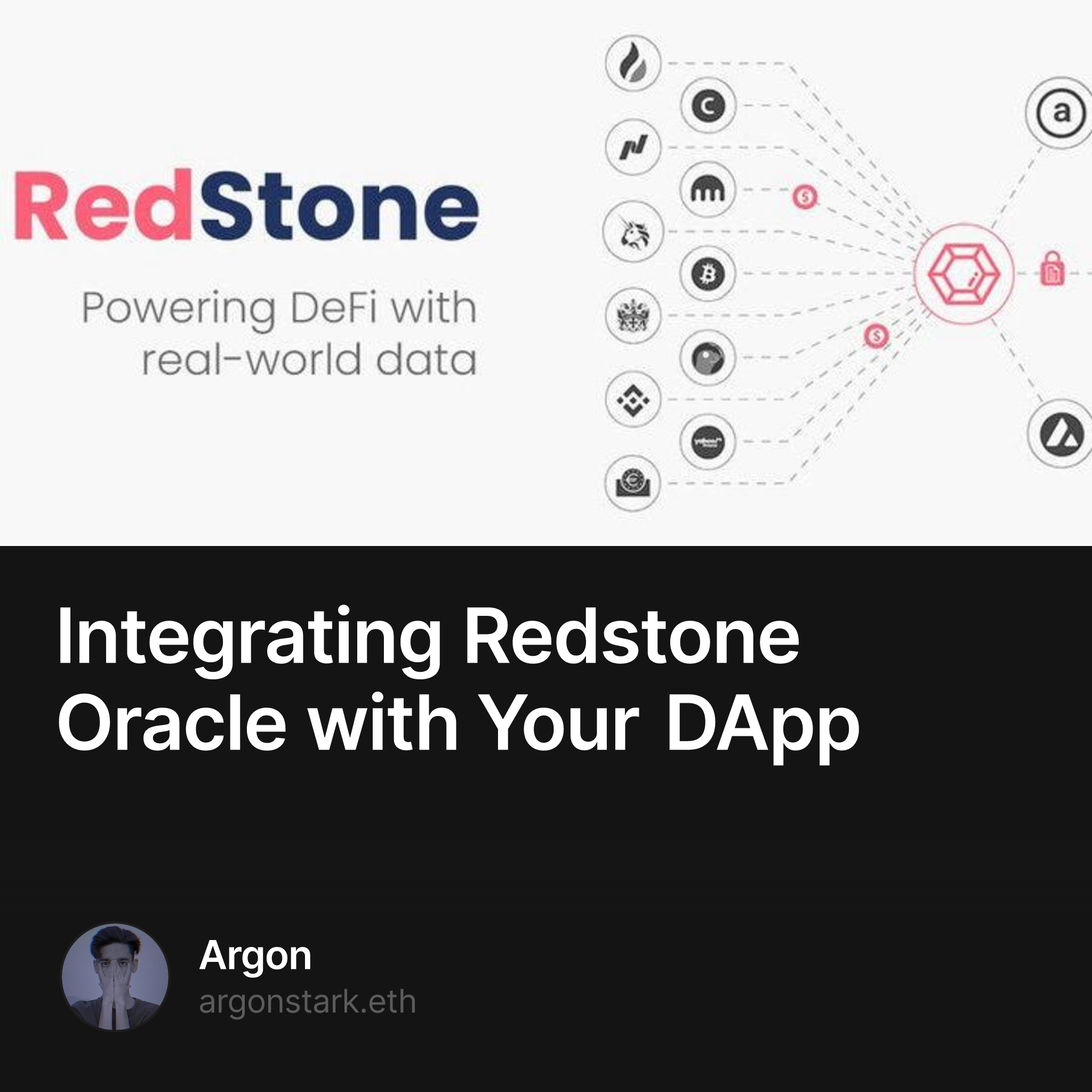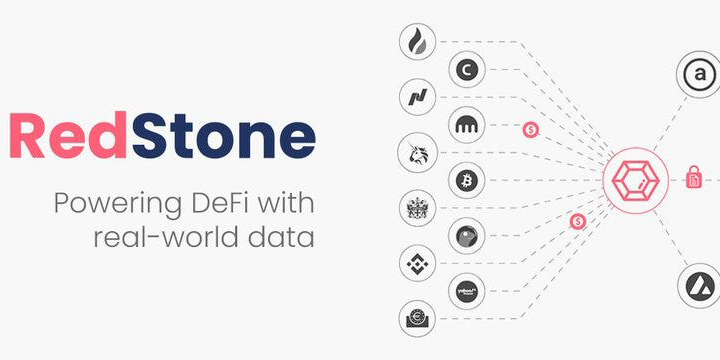Overview
Redstone Oracle offers a way to feed external, real-world data into your DApps. This tutorial will guide you through the process of integrating Redstone Oracle into your Ethereum-based DApp.
Prerequisites
-
Basic understanding of Solidity and smart contract development
-
Node.js and npm installed
-
Truffle Suite (or any other smart contract deployment tool)
-
An Ethereum wallet with Ether for deploying contracts
Steps
Step 1: Setting Up Your Development Environment
-
Create a directory for your DApp:
mkdir MyDApp && cd MyDApp -
Initialize a new npm project:
npm init -y -
Install Truffle globally (if you haven't already):
npm install -g truffle -
Set up your Truffle project:
truffle init
Step 2: Writing the Smart Contract
-
Create a new Solidity file in the
contracts/directory:touch contracts/UseRedstoneOracle.sol -
Implement the smart contract:
// SPDX-License-Identifier: MIT pragma solidity ^0.8.0; import "@redstone-finance/redstone-evm-connector/contracts/RedstoneOraclesConnector.sol"; contract UseRedstoneOracle is RedstoneOraclesConnector { // Your smart contract code here }
Step 3: Integrating Redstone Oracle
-
Install the Redstone EVM Connector:
npm install @redstone-finance/redstone-evm-connector -
Use the Redstone Oracle in your smart contract to fetch data:
function getPriceFromOracle(string memory symbol) public view returns (uint256) { bytes32[] memory payload = new bytes32[](1); payload[0] = keccak256(abi.encodePacked(symbol)); uint256 price = getPriceFromMsg(payload); return price; }
Step 4: Deploying the Smart Contract
-
Configure your
truffle-config.jswith the appropriate network settings. -
Write a migration script in the
migrations/folder to deploy your contract. -
Deploy your contract to the Ethereum network:
truffle migrate --network <your-network>
Step 5: Interacting with the Smart Contract
-
Use Truffle console or a frontend JavaScript library like web3.js to interact with your deployed contract:
const contractInstance = await UseRedstoneOracle.deployed(); const price = await contractInstance.getPriceFromOracle("ETH"); console.log("The price of ETH is:", price.toString());
Testing
- Write tests for your smart contracts using Truffle's built-in testing framework, which supports both JavaScript and Solidity tests.
Deployment
- After thorough testing, deploy your DApp and smart contract to the Ethereum mainnet using the same Truffle migration steps, but targeting the
mainnetnetwork.
Conclusion
You've now integrated Redstone Oracle into your DApp, allowing you to access real-world data securely and reliably. Remember to test thoroughly on testnets before deploying to the mainnet.
For more detailed documentation and advanced features, visit the official Redstone Documentation.
This tutorial is a starting point. Depending on the complexity of the DApp and the features of the Redstone Oracle, you might need to cover more advanced topics such as handling multiple data sources, updating oracle data, and securing oracle interaction. Always refer to the latest official Redstone documentation for the most up-to-date information and best practices.

